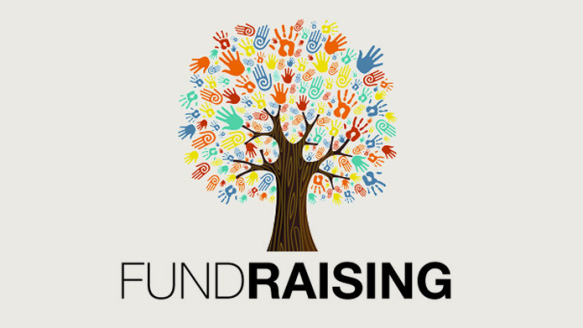The Role of Area Involvement in Nonprofit Fundraising: Building Lasting Relationships for Lasting Support
Area interaction is significantly identified as a critical component of successful nonprofit fundraising. By fostering real connections with regional stakeholders, companies can cultivate trust and commitment, which are necessary for lasting assistance. Nevertheless, the techniques and techniques used to involve neighborhoods vary extensively, increasing vital inquiries regarding effectiveness and impact. What are the very best techniques for cultivating these crucial links, and how can nonprofits measure their success in this arena? Comprehending these dynamics could considerably affect the future of fundraising efforts and the total mission of nonprofit organizations.
Comprehending Area Interaction
Neighborhood engagement is an important component of successful nonprofit fundraising efforts. Nonprofits must identify crucial stakeholders-- such as community members, local services, and other companies-- to produce effective engagement techniques.
Effective community engagement is based on active listening and responsiveness to the needs and rate of interests of the community. This procedure entails soliciting feedback, comprehending neighborhood characteristics, and ensuring that the company's mission lines up with local concerns. Involving the community can take various forms, consisting of public meetings, volunteer possibilities, and collaboration initiatives, each designed to urge involvement and investment in the company's objectives.
Moreover, area involvement should be approached as a recurring dialogue rather than a single initiative. By cultivating a comprehensive environment where community voices are heard and valued, nonprofits can construct a strong structure for future fundraising undertakings. Ultimately, a deep understanding of area engagement equips organizations to develop authentic connections that improve their overall performance and sustainability.
Benefits of Solid Relationships
Solid relationships developed through neighborhood involvement return many benefits for not-for-profit fundraising initiatives. First and foremost, these connections foster count on and trustworthiness, crucial components in motivating contributors to contribute. When possible advocates see a nonprofit proactively involved in their neighborhood, they are a lot more most likely to believe in its mission and influence.

Furthermore, these relationships promote efficient communication. Nonprofits can take advantage of their links to share stories of influence, updates, and needs, making certain that advocates remain informed and engaged. This open line of interaction not just enhances bonds but additionally encourages referral promotion, increasing the nonprofit's reach.
Lastly, strong neighborhood connections can bring in brand-new partners and enrollers. People and companies are extra inclined to straighten with companies that demonstrate purposeful community participation, giving added sources and assistance that can considerably enhance fundraising abilities. Therefore, cultivating robust partnerships via neighborhood interaction is essential to a not-for-profit's long-lasting fundraising success.
Approaches for Effective Interaction
Exactly how can nonprofits efficiently engage their areas to boost fundraising initiatives? Establishing targeted methods is vital for promoting meaningful connections. First, leveraging social networks platforms makes it possible for companies to share their mission dynamically and interactively, reaching a broader target market. Normal updates, involving content, and calls-to-action can galvanize neighborhood rate of interest and participation.
2nd, organizing community occasions, such as workshops, volunteer chances, or fundraising drives, helps with in person interaction, allowing nonprofits to display their influence and initiatives. These events not only elevate funds however likewise cultivate connections and allow area members to engage directly with the cause.
Third, carrying out personalized communication approaches can improve involvement. Customizing messages to specific donor sectors based on interests and previous payments fosters a feeling of belonging and financial investment in the company's goal.
Lastly, creating collaborations with local businesses and community leaders can intensify outreach efforts. Collaborative efforts can boost exposure and trustworthiness, demonstrating a cumulative commitment to the area's wellness. By integrating these strategies, nonprofits can develop long-term connections that enhance fundraising efforts and drive sustainable assistance.
Determining Engagement Success
While involving the area is important for effective nonprofit fundraising, measuring the effectiveness of these engagement efforts is equally crucial. anchor Developing clear metrics permits organizations to evaluate how well they are attaching with their target market and achieving their fundraising objectives. Key performance indications (KPIs) such as donor retention rates, volunteer involvement levels, and engagement on social media platforms supply tangible information for examination.

Routinely assessing these metrics allows organizations to pivot their basics strategies when essential, making sure that community interaction remains aligned with their overall mission. Moreover, sharing these outcomes with stakeholders promotes transparency and develops count on, motivating additional community involvement. Inevitably, a robust measurement framework not just educates future fundraising efforts however also enhances the connection between the nonprofit and its advocates, laying the groundwork for sustainable success.
Case Researches in Area Effect
Numerous study show the profound effect that click to investigate area engagement can have on not-for-profit fundraising success. One significant example is the "Food for Idea" effort, where a local food bank partnered with organizations and colleges to host neighborhood dinners. These events not just increased funds yet likewise cultivated a feeling of belonging amongst individuals, considerably enhancing donor retention rates.
One more compelling case is the "Environment-friendly Spaces Project," which involved regional residents in the revitalization of metropolitan parks. This initiative not just amassed monetary support from local businesses but likewise cultivated a volunteer base that added to continuous maintenance and programming. The feeling of ownership and satisfaction among neighborhood participants converted right into sustained payments.
In the world of arts, the "Art for All" campaign effectively engaged neighborhood artists and customers to create collective art setups, causing boosted presence and contributions for a local arts nonprofit.
These instances highlight that when nonprofits focus on neighborhood participation, they can create long lasting connections that enhance fundraising initiatives, making sure sustainable assistance and cultivating a vivid community culture. Such situations demonstrate that community interaction is not just an approach but an important column of nonprofit success.
Conclusion
In conclusion, neighborhood involvement is indispensable to the success of not-for-profit fundraising initiatives. Ultimately, a durable structure of area assistance not only magnifies fundraising potential however also cultivates a society of partnership, important for accomplishing lasting organizational goals and sustaining purposeful impact. fundraising consultant.
Nonprofits have to determine vital stakeholders-- such as community participants, regional companies, and other companies-- to create reliable engagement methods.
/tastea-2019/images/fundraiseelements1-03-cb88c.png)
In verdict, community interaction is indispensable to the success of not-for-profit fundraising efforts.